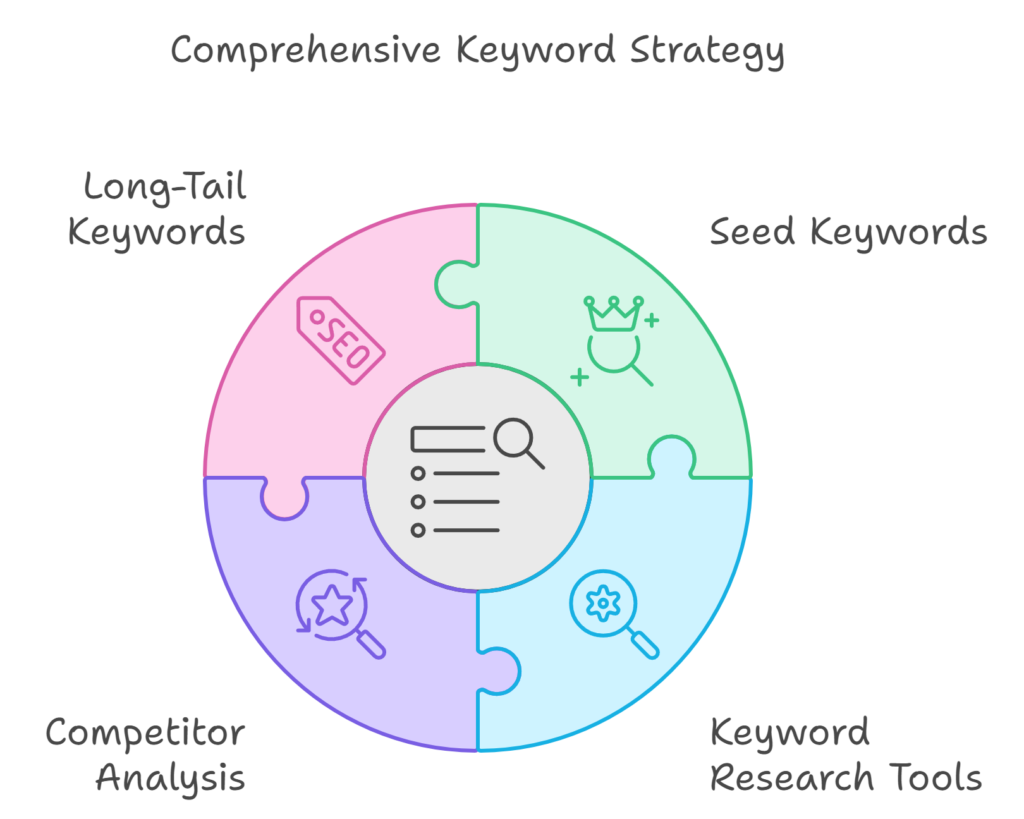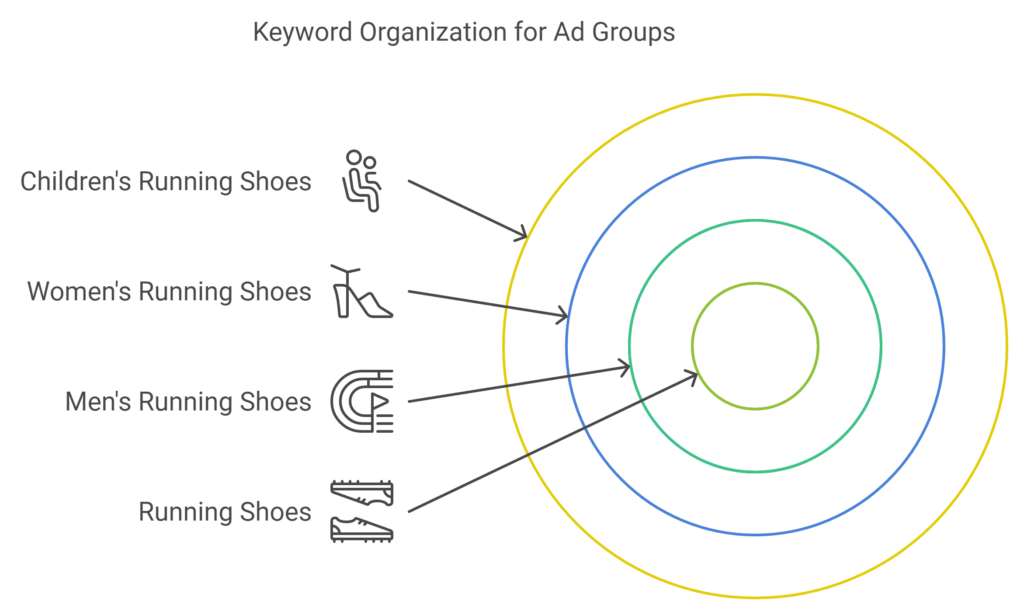In the competitive world of digital advertising, launching a successful Google Ads campaign requires careful planning and strategic execution. This comprehensive guide will walk you through the essential steps to select the right keywords and prepare your campaign for maximum Return on Investment (ROI). Whether you’re new to Google Ads or looking to refine your approach, these tips will help you create a solid foundation for success.
1. Define Your Campaign Goals

Before diving into keywords and ad copy, it’s crucial to establish clear objectives for your campaign. Ask yourself:
- Are you aiming to increase website traffic?
- Do you want to boost sales of a specific product or service?
- Is lead generation your primary goal?
Having well-defined goals will guide your keyword selection, ad creation, and overall strategy. For example, if your goal is to generate leads, you’ll focus on keywords that indicate user intent to learn more or sign up, rather than immediate purchase keywords.
2. Understand Your Target Audience

Knowing your audience is key to effective keyword selection and ad creation. To gain a deep understanding:
- Create detailed buyer personas
- Analyze your existing customer data
- Conduct surveys or interviews with your target market
This research will help you think like your audience and identify the keywords they’re likely to use. For instance, if you’re targeting busy professionals looking for time-saving solutions, you might focus on keywords like “quick,” “efficient,” or “time-saving” in your campaign.
3. Conduct Thorough Keyword Research

Keyword research is the backbone of any successful Google Ads campaign. Here’s how to approach it:
a) Brainstorm Seed Keywords
Start with a list of basic terms directly related to your product or service. If you’re selling running shoes, your seed keywords might include “running shoes,” “athletic footwear,” and “jogging sneakers.”
b) Use Keyword Research Tools
Leverage tools like Google Keyword Planner, SEMrush, Ahrefs, or Moz Keyword Explorer to expand your list. These tools provide valuable data on search volume, competition, and related keywords. Look for keywords with a good balance of search volume and competition.
c) Analyze Competitor Keywords
Study the keywords your competitors are targeting. Tools like SpyFu can reveal the keywords driving traffic to your competitors’ sites, helping you identify opportunities and gaps in your own strategy.
d) Consider Long-Tail Keywords
Don’t overlook longer, more specific phrases. While they may have lower search volumes, long-tail keywords often have less competition and can be more cost-effective. For example, “best running shoes for flat feet” is a long-tail keyword that could be valuable for a specialized running shoe store.
4. Organize Your Keywords into Themed Ad Groups

Group your keywords into tightly themed ad groups. This organization allows you to create more targeted ads and improves your Quality Score, which can lead to better ad positions and lower costs. For example, you might have separate ad groups for “men’s running shoes,” “women’s running shoes,” and “children’s running shoes.”
5. Set Up Conversion Tracking

Proper conversion tracking is essential for measuring your ROI accurately. Take these steps:
- Install Google Analytics on your website
- Set up Google Ads conversion tracking
- Define what actions count as conversions (e.g., purchases, sign-ups, downloads)
By tracking conversions, you’ll be able to see which keywords and ads are driving the most valuable actions, allowing you to optimize your campaign effectively.
6. Create Compelling Ad Copy
Your ad copy should speak directly to your target audience and encourage clicks. Follow these best practices:
- Include your target keywords in the ad headline and description
- Highlight unique selling points or special offers
- Use strong calls-to-action that align with your campaign goals
- Ensure your ad copy matches the intent behind the search query
For example, if you’re targeting the keyword “affordable running shoes,” your ad might read: “Quality Running Shoes at Budget Prices | Free Shipping on Orders Over $50 | Shop Now”
7. Optimize Your Landing Pages
Your landing pages should deliver on the promises made in your ads. Ensure they are:
- Relevant to your ads and keywords
- Fast-loading and mobile-friendly
- Designed to convert (clear CTA, easy navigation, compelling content)
If your ad promotes a sale on running shoes, the landing page should feature the discounted products prominently, with an easy path to purchase.
8. Set a Realistic Budget
Determine how much you’re willing to spend on your campaign:
- Start with a conservative daily budget to test the waters
- Be prepared to adjust based on performance data
- Consider allocating more budget to your best-performing keywords and ad groups
Remember, it’s not just about how much you spend, but how efficiently you spend it. Monitor your cost per click (CPC) and cost per acquisition (CPA) closely.
9. Use Ad Extensions
Ad extensions provide additional information and increase the visibility of your ads. Utilize:
- Sitelink extensions to direct users to specific pages on your site
- Callout extensions to highlight unique selling points
- Structured snippet extensions to showcase specific aspects of your products or services
For a running shoe campaign, you might use sitelink extensions to link to “Men’s Shoes,” “Women’s Shoes,” “Sale Items,” and “Size Guide.”
10. Plan for Continuous Optimization
Launching your campaign is just the beginning. Plan for ongoing optimization:
- Schedule regular check-ins to review performance metrics
- Be prepared to adjust bids, keywords, and ad copy based on data
- Use A/B testing to continuously improve your ads and landing pages
- Stay informed about industry trends and Google Ads updates
By consistently refining your approach, you can improve your campaign’s performance over time and maximize your ROI.
Remember, the key to a successful Google Ads campaign lies in thorough preparation and ongoing optimization. By following these steps, you’ll be well-equipped to create a campaign that not only reaches your target audience but also delivers a strong return on your investment. Happy advertising!